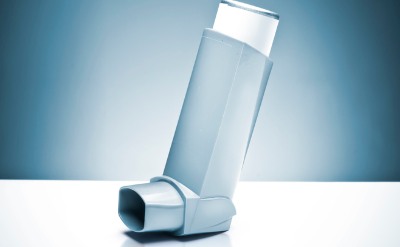A once-daily, single-inhaler combination of mometasone furoate, indacaterol acetate, and glycopyrronium bromide improved lung function in patients with inadequately controlled asthma, according to a recent article in The Lancet Respiratory Medicine.
Researchers conducted a 52-week, double-blind, double-dummy, parallel-group, active-controlled phase 3 study. Eligible patients were aged 18 to 75 years with symptomatic asthma despite treatment with medium-dose or high-dose ICS-LABA, experienced at least one exacerbation in the previous year, and an FEV1 of less than 80% of the predicted normal. Patients were recruited from 415 sites across 41 countries.

A total of 3,092 patients were randomly assigned (1:1:1:1:1) to the following doses:
Medium-dose mometasone furoate, indacaterol acetate, and glycopyrronium bromide (MF-IND-GLY; n=620);
High-dose MF-IND-GLY (n=619);
Medium-dose dual therapy with mometasone furoate, indacaterol acetate (MF-IND, n=617);
High-dose MF-IND, (n=618); or
High-dose fluticasone-salmeterol (FLU-SAL, n=618).
Overall 2,747 patients (88.8%) completed the 52-week treatment. The primary outcome was change in trough FEV1 with MF-IND-GLY versus MF-IND from baseline to week 26.
Medium-dose MF-IND-GLY (treatment difference [Δ] 76 mL [95% CI 41–111]; p<0·001) and high-dose MF-IND-GLY (Δ 65 mL [31–99]; p<0·001) showed superior improvement in trough FEV1 versus corresponding doses of MF-IND at week 26. Improvements in trough FEV1 were greater for both medium-dose MF-IND-GLY (99 mL [64–133]; p<0·001) and high-dose MF-IND-GLY (119 mL [85–154]; p<0·001) than for high-dose FLU-SAL at week 26. The improvements in trough FEV1 versus MF-IND and FLU-SAL were observed as early as day 2 and maintained to week 52.
MF-IND-GLY reduced the annualized rate of moderate or severe exacerbations by 13% (p=0.17; medium-dose) and 15% (p=0.12; high-dose), and all exacerbations (mild, moderate, and severe) by 13% (p=0.16; medium-dose) and 21% (p=0.016; high-dose) compared with medium-dose and high-dose MF-IND.
The occurrence of adverse events was similar and low across the treatment groups. The most frequently reported AEs were asthma exacerbation, cholelithiasis, pneumonia, lower respiratory tract infection, and pulmonary embolism.
Asthma exacerbation was the most common AE leading to permanent discontinuation in any treatment group, with no difference between the groups. Seven deaths were reported but none were considered by the investigators to be caused by study drugs or other study-related factors.
